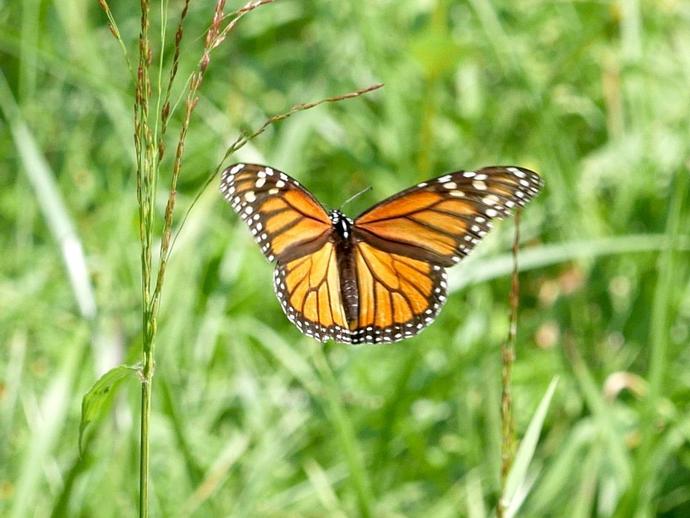September 16, 2020
I have returned from my vacation, and what better way to commemorate the return of the daily nature post than by celebrating North America's most iconic butterfly?
The monarch butterfly (Danaus plexippus) is almost certainly the most famous butterfly in North America, not only because of its beauty, but also because of the incredible journey that these butterflies take each year. In late summer/early fall, monarchs in the U.S. and Canada migrate thousands of miles to Florida and Mexico where they overwinter (just like your older relatives!). There is also a population of monarchs west of the Rockies that tends to overwinter in southern California, but they also pop in Mexico.
The vast majority of eastern monarchs end their journey at a 140,000 acre area straddling the Michoacán-Mexico State border. Fortunately, this site is protected within the Reserva de la Mariposa Monarca (Monarch Butterfly Biosphere Reserve). Since 1980, this refuge has protected the winter habitat of the monarchs. While the Mexican environmental authorities still have to combat illegal logging within the reserve, it's believed that declines in the population of monarch butterflies has less to do with the destruction of their overwintering habitat than the destruction of their breeding grounds in the U.S.
Monarchs lay their eggs on milkweed plants, and the monarch caterpillars feed on the milkweed. The white milkweed sap, which is toxic to many animals, gives the caterpillars and adult butterflies a natural protection from predators by making them taste terrible.
The monarch is the state insect of seven states -- Alabama, Idaho, Illinois, Minnesota, Texas, Vermont, and West Virginia -- and monarchs have even been to space! In 2009, monarch caterpillars were brought aboard the International Space Station. The caterpillars successfully created their chrysalises and the adults emerged from the chrysalises without issue (although it took 15 minutes for their wings to dry in orbit versus 3-6 minutes here on Earth).
While monarchs are not considered endangered in the U.S., their populations have been trending downwards for years. It's believed that one of the major causes of this decline is the use of herbicides on the milkweed that these butterflies rely on to complete their life cycles. Climate change, of course, also plays a major role. While there's not much that we as individuals can do about the second issue, you can definitely help the monarchs out by avoiding herbicides.
(By the way, I apologize for the quality of these photos. The monarch butterfly is apparently one of the most skittish creatures in existence, and it took me half an hour of following a monarch around a field just to get these two pics.) #BenInNature
ABOUT THIS POST
Social distancing can be difficult, but it presents a great opportunity to become reacquainted with nature. While he is working from home, Administrator of Science Ben Williams is venturing outdoors each day to record a snapshot of the unique sights that can be found in the natural world.
NATURE PHOTO IDENTIFICATIONS
If you discover something in nature that you would like help identifying, be sure to message us right here on Facebook with a picture (please include location and date of picture) and we'll have our experts help you identify it!

 Hours & Admissions
Hours & Admissions Directions
Directions

